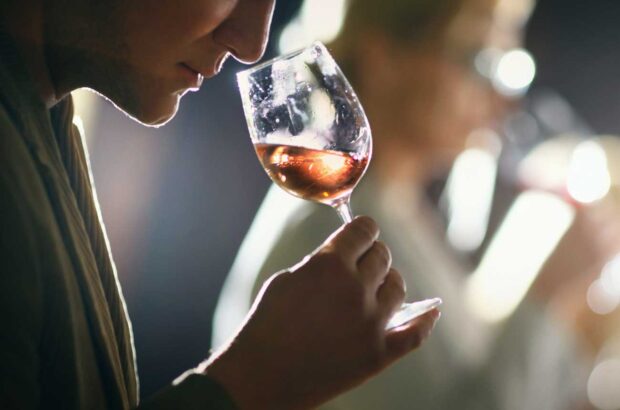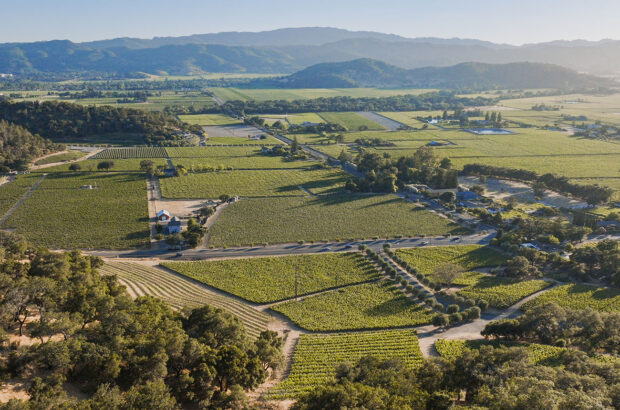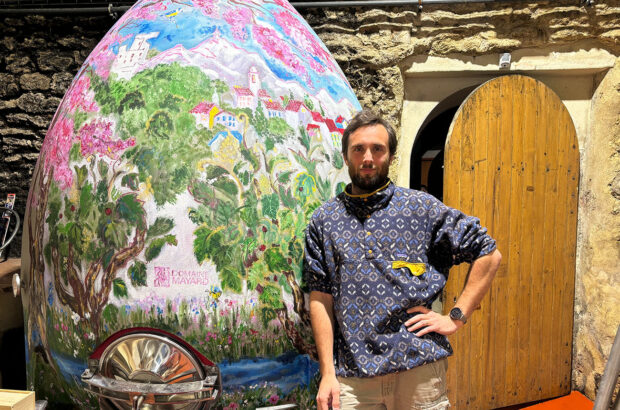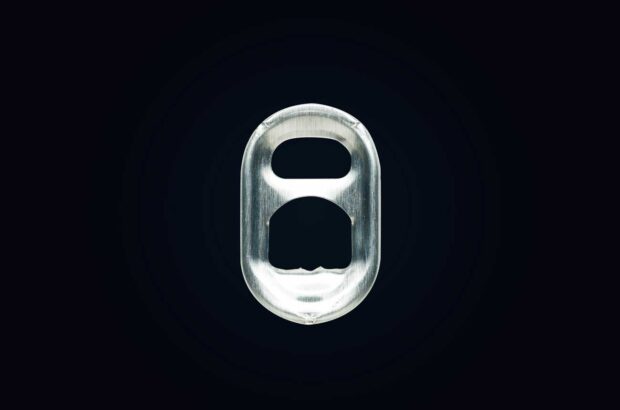Corsican wines remain a remarkably well-kept secret, but as
exports and accolades increase, ROSEMARY GEORGE MW
believes the island’s native grapes can woo more admirers
I was instantly enchanted by Corsica when I first visited more than 20 years ago. I had nopreconceived ideas about the island’s wines, and in those days very few left its shores. Nor were they ever the subject of a book or article.
It was a veritable voyage of discovery, for Corsica boasts a host of original grape varieties. Some of those varieties were finally recognised earlier this year when the bestsub-£10 red blend of the Decanter World Wine Awards went to a Corsican wine. But was it a one-off, or is there more where that came from?
Corsica’s history has inevitably had a huge influence on the island’s wines. The most famous Corsican, the Emperor Napoleon Bonaparte, may have been French, but, until three months before Napoleon’s birth in Ajaccio in 1769, the island was controlled from Genoa in Italy,
and before that it was part of the city state of Pisa.
Consequently, one of the most important grapes is Nielluccio, a variety thought to be a close cousin of Tuscany’s Sangiovese. The principal white variety is Vermentino, which is also called Malvoisie. And Sciacarello is a red unique to the island.
The name translates in the Corsican dialect as ‘the grape that bursts under the teeth’, and indeed it has a tough skin, with plenty of juice. The most significant event for Corsican viticulture in the 20th century was the influx of pieds noirs from North Africa when Algeria gained independence.
They had been wine growers, aiming for high yields with varieties such as Carignan, Alicante Bouschet, Cinsaut and Grenache, and they expected to find conditions in Corsica similar to those in North Africa. They did not.
When they pulled up large tracts of maquis or scrub land to plant vineyards in what often
turned out to be quite unsuitable terrain. The vineyards proved unprofitable, often replaced by equally unprofitable kiwi fruit.
But they left their mark, such that Grenache, Cinsaut and Carignan continue to feature in the island’s appellations. And some of the pieds noirs have made a success of wine growing, notably the Skalli family, now the largest private vineyard owner on Corsica with the 220ha Terra Vecchia Vineyards on the eastern coast below Bastia.
{"content":"PHA+SXNsYW5kIHRyYWRpdGlvbnM8L3A+CjxkaXYgY2xhc3M9ImFkLWNvbnRhaW5lciBhZC1jb250YWluZXItLW1vYmlsZSI+PGRpdiBpZD0icG9zdC1pbmxpbmUtNSIgY2xhc3M9ImlwYy1hZHZlcnQiPjwvZGl2PjwvZGl2Pgo8cD5BbHRob3VnaCBDb3JzaWNhIG9mdGVuIGRpc3BsYXlzIGFuIGludGVuc2UgaW5zdWxhcml0eSwgaXQgaGFzIG5vdCBiZWVuIGltbXVuZSB0byBhbiBpbnRlcmVzdCBpbiBpbnRlcm5hdGlvbmFsIGdyYXBlcy4gV2hlbiB0aGV5IHdlcmUgZmlyc3QgaW50cm9kdWNlZCwgYnkgU2thbGxpIGFuZCBvdGhlcnMsIHRoZXkgd2VyZSBwcm9kdWNlZCBhcyAxMDAlIHZhcmlldGFscywgYnV0IHRoZXJlIGlzIGEgZ3Jvd2luZyB0cmVuZCB0byBibGVuZCB0aGVtIHdpdGggdHJhZGl0aW9uYWw8L3A+CjxwPmdyYXBlcywgYXMgaW4gU2thbGxp4oCZcyBOaWVsbHVjY2lvLU1lcmxvdCBibGVuZCAodGhlIGFmb3JlbWVudGlvbmVkIEludGVybmF0aW9uYWwgUmVkIEJsZW5kIFVuZGVyLcKjMTAgVHJvcGh5IHdpbm5lciBhdCB0aGUgRFdXQSkgYW5kIGl0cyBDaGFyZG9ubmF5LSBWZXJtZW50aW5vLjwvcD4KPHA+WGF2aWVyIExvZ2V0dGUsIFNrYWxsaeKAmXMgZXhwb3J0IGRpcmVjdG9yLCB0YWxrcyBvZiB0aGUgcHJvYmxlbXMgb2YgZ3Jvd2luZyBOaWVsbHVjY2lvIGZvciB2aW5zIGRlIHBheXMuIOKAmFRoZSB5aWVsZHMgYXJlIHRvbyBsb3cgYW5kIGl0IGlzIGRpZmZpY3VsdCB0byByaXBlbizigJkgaGUgc2F5cy4gVGhlIHNvbHV0aW9uIGlzIHRvIGJsZW5kIGl0IHdpdGggaGlnaGVyLXlpZWxkaW5nIE1lcmxvdCwg4oCYdGhlbiB5b3UgaGF2ZSBhIHdpbmUgdGhhdCBjYW4gY29tcGV0ZSBvbiBwcmljZSB3aXRoIHRoZSBpbnRlcm5hdGlvbmFsIGNvbXBldGl0aW9u4oCZLjwvcD4KPHA+Rm9yIExvZ2V0dGUsIHRoYXQgaXMgdGhlIHdheSBmb3J3YXJkIGZvciBDb3JzaWNhLiBOb3Qgc3VycHJpc2luZ2x5LCB0aGlzIGF0dGl0dWRlIGNhdXNlcyBwdXJpc3RzIGEgY2VydGFpbiBhbW91bnQgb2YgdW5lYXNlLiBUaG9zZSB3aG8gdXBob2xkIHRoZSBpc2xhbmTigJlzIHRyYWRpdGlvbnMgYXJlIGFueGlvdXMgdGhhdCBpbnRlcm5hdGlvbmFsIHZhcmlldGllcyBkbyBub3QgaW5maWx0cmF0ZSB0aGUgYXBwZWxsYXRpb25zLCBhbmQgZm9yIHRoZSBtb21lbnQgdGhleSBhcmUgaG9sZGluZyB0aGVpciBncm91bmQuPC9wPgo8cD5TeXJhaCBpcyBhbGxvd2VkIGluIEFDIFZpbiBkZSBDb3JzZSwgYnV0IHRoZSBpbnRlcmxvcGVycyBhcmUgcmVhbGx5IG9ubHkgZ3Jvd24gb24gdGhlIGNvYXN0YWwgcGxhaW4gYmV0d2VlbiBCYXN0aWEgYW5kIFBvcnRvIFZlY2NoaW8gZm9yIHZpbnMgZGUgcGF5cywgd2hlcmUgdHdvIGNvb3BlcmF0aXZlcyBkb21pbmF0ZSBwcm9kdWN0aW9uLjwvcD4KPHA+Q2hyaXN0aWFuIEltYmVydCwgb3duZXIgb2YgRG9tYWluZSBkZSBUb3JyYWNjaWEsIHRoZSBvbmx5IGVzdGF0ZSBvZiBub3RlIGluIFBvcnRvIFZlY2NoaW8sIGlzIGFkYW1hbnQuIOKAmEl04oCZcyBzaW1wbGU7IHRoZSBvbmx5IHdheSBmb3J3YXJkIGlzIHRvIGNvbmNlbnRyYXRlIG9uIHRyYWRpdGlvbmFsIHZhcmlldGllcy4gSXTigJlzIGNvbXBsZXRlbHkgbWFkIHRvIHBsYW50IHRoZSB2YXJpZXRpZXMgb2YgbWFpbmxhbmQgRnJhbmNlIHRoYXQgYXJlIGdyb3duIGVsc2V3aGVyZSBtb3JlIGNoZWFwbHkuPC9wPgo8cD5PdXIgdHJ1bXAgY2FyZCBpcyBvdXIgdHlwaWNpdHksIGFuZCB0aGF0IGlzIHdoYXQgd2UgbXVzdCB3b3JrIG9uLuKAmSBBbmQgdGhhdCBoYXMgYmVlbiB0aGUgdHJlbmQuIEEgZGVjYWRlIGFnbywgdGhlcmUgd2VyZSA5LDAwMGhhIG9mIHZpbmVzLCBvZiB3aGljaCBqdXN0IDEsMDUwaGEgbWFkZSB0aGUgYXBwZWxsYXRpb24uIFRvZGF5IDMsMjAwaGEgb2YgNywwMDBoYSBhcmUgdGhlIENvcnNlIEFDLjwvcD4KPHA+VGhlIHByaW5jaXBhbCBDb3JzaWNhbiBhcHBlbGxhdGlvbiBpcyBWaW4gZGUgQ29yc2UsIG9yIHNpbXBseSBDb3JzZSwgd2hpY2ggY2FuIGNvdmVyIHRoZSB3aG9sZSBpc2xhbmQuIEluIGZhY3QsIHRoZWNlbnRyZSBvZiB0aGUgaXNsYW5kIGlzIHZlcnkgbW91bnRhaW5vdXMgYW5kIG1vc3Qgb2YgdGhlIHZpbmV5YXJkcyBhcmUgaW4gY29hc3RhbCBhcmVhcy4gVmluIGRlIENvcnNlIGluY2x1ZGVzIHNldmVyYWwgY3J1cy48L3A+CjxwPlRyYXZlbGxpbmcgY2xvY2t3aXNlIGZyb20gQWphY2NpbywgdGhleSBhcmUgQ2FsdmksIENvdGVhdXggZGUgQ2FwIENvcnNlIGFuZCBNdXNjYXQgZGUgQ2FwIENvcnNlLCBQb3J0byBWZWNjaGlvLCBGaWdhcmkgYW5kIFNhcnTDqG5lLiBCb3RoIFBhdHJpbW9uaW8gYW5kIEFqYWNjaW8gYXJlIGFwcGVsbGF0aW9ucyBpbiB0aGVpciBvd24gcmlnaHQuIENvcnNpY2EgYWxzbyBwcm9kdWNlcyB2aW5zIGRlIHBheXMgdW5kZXIgdGhlIGFwdCBuYW1lIG9mIElsZSBkZSBCZWF1dMOpLjwvcD4KPHA+QnV0IHRoZSB0cnVlIG9yaWdpbmFsaXR5IG9mIENvcnNpY2EgaXMgdG8gYmUgZm91bmQgaW4gd2luZXMgc3VjaCBhcyBQYXRyaW1vbmlvLDwvcD4KPHA+dGhlIGxpdmVsaWVzdCBvZiB0aGUgQ29yc2ljYW4gYXBwZWxsYXRpb25zLCB3aXRoIDMwIGdyb3dlcnMgbWFraW5nIHJlZCwgd2hpdGUgYW5kIHJvc8OpLiBGb3Igb25lIG9mIHRoZSBsZWFkaW5nIGdyb3dlcnMsIEFudG9pbmUgQXJlbmE6IOKAmFRoaXMgaXMgd2hlcmUgTmllbGx1Y2NpbyBpcyBhdCBpdHMgbW9zdCBjaGFyYWN0ZXJpc3RpYywgb24gbGltZXN0b25lIHNsb3Blcy7igJk8L3A+CjxwPkZvciB0aGUgcmVkLCBOaWVsbHVjY2lvIG11c3Qgbm93IHJlcHJlc2VudCA5MCUgb2YgdGhlIGJsZW5kLCB3aXRoIEdyZW5hY2hlIGRlY3JlYXNpbmcgcmFwaWRseSBhcyBhIHJlc3RydWN0dXJpbmcgcHJvZ3JhbW1lIGVuY291cmFnZXMgdGhlIHBsYW50aW5nIG9mIE5pZWxsdWNjaW8uIEJ1dCBmb3IgbXkgdGFzdGVidWRzLCB0aGUgVmVybWVudGlub3MgYXJlIGV2ZW4gbW9yZSBleGNpdGluZyBhbmQgb3JpZ2luYWwuPC9wPgo8cD5JbiBBcmVuYeKAmXMgaGFuZHMsIHRoZXkgd2VyZSBhIHJldmVsYXRpb24sIHdpdGggd29uZGVyZnVsIGhlcmJhbCBmbGF2b3Vycy4gSGUgaXMgb3B0aW1pc3RpYyBmb3IgdGhlIGZ1dHVyZSBvZiBQYXRyaW1vbmlvLiDigJhBYm92ZSBhbGwgd2UgbXVzdCBtYWludGFpbiBpdHMgdHlwaWNpdHk7IFZlcm1lbnRpbm8gaXMgYW4gZXhwcmVzc2l2ZSB3aW5lLCBzbyB3ZSBtdXN0IG5vdCBjb3B5IG90aGVycy7igJk8L3A+CjxwPlRoZSBvbmUgcHJvYmxlbSBpcyBpdHMgcHJveGltaXR5IHRvIFN0LUZsb3JlbnQsIHdoaWNoIGhlIGRlc2NyaWJlcyBhcyB0aGUg4oCYU3QtVHJvcGV6IG9mIENvcnNpY2HigJksIGFuZCBCYXN0aWEsIHB1dHRpbmcgcHJlc3N1cmUgb24gdGhlIGxhbmQgZm9yIGhvdXNpbmcgcmVxdWlyZW1lbnRzLiBTY2lhY2FyZWxsbyBpcyBtb3JlIGF0IGhvbWUgb24gdGhlIGdyYW5pdGUgc29pbCBvZiBBamFjY2lvIGFuZCBTYXJ0w6huZS48L3A+CjxwPllvdSBtYXkgb2NjYXNpb25hbGx5IGZpbmQgYSBwdXJlIFNjaWFjYXJlbGxvLCBidXQgaXQgbGFja3MgY29sb3VyLCBzbyBpcyBvZnRlbiBibGVuZGVkIHdpdGggTmllbGx1Y2NpbyBvciBHcmVuYWNoZS4gQW5kIGl0IGNhbiBwcm9kdWNlIHNvbWUgZGVsaWNhdGUgYnV0IGZ1bGwtYm9kaWVkIHJvc8Opcy4gT25lIG9mIFNhcnTDqG5l4oCZcyBsZWFkaW5nIHByb2R1Y2VycyBpcyBEb21haW5lIEZpdW1pY2ljb2xpLjwvcD4KPHA+SXRzIHByb2dyZXNzIGhhcyBiZWVuIGZhc2NpbmF0aW5nLiBUaGVyZSBoYXMgYmVlbiBhIGdlbmVyYXRpb24gY2hhbmdlIGFuZCB0aGUgbmV3IHJlZ2ltZTwvcD4KPHA+aGFzIHRha2VuIGFkdmFudGFnZSBvZiByZXBsYW50aW5nIHN1YnNpZGllcyB0byBjb252ZXJ0IDE1aGEgb2YgQ2FyaWduYW4sIENpbnNhdXQsIE5pZWxsdWNjaW8gYW5kIEdyZW5hY2hlIGludG8gU2NpYWNhcmVsbG8gYW5kIFZlcm1lbnRpbm8uPC9wPgo8cD5UaGVyZSBpcyBzb21lIFN5cmFoLCBidXQgb3duZXIgU2ltb24gQW5kcmVhbmkgaXMgYW54aW91cyB0byBwcmVzZXJ2ZSBTYXJ0w6huZeKAmXMgdW5pcXVlbmVzcy4gVGhlcmUgaXMgbm8gZG91YnQgdGhhdCBDb3JzaWNh4oCZcyBtYWluIHByb2JsZW0gaXMgaXRzIGluc3VsYXJpdHkuIFRoZSBpbmRlcGVuZGVudDwvcD4KPHA+cHJvZHVjZXJzIHNlbGwgYXMgbXVjaCBhcyA4MCUgb2YgdGhlaXIgd2luZXMgb24gdGhlIGlzbGFuZCwgYW5kIHRoZXkgYXJlIGhlYXZpbHkgZGVwZW5kZW50IG9uIHRoZSB0b3VyaXN0IHRyYWRlLCBtYWtpbmcgOTAlIG9mIGFsbCBzYWxlcyBpbiB0aGUgc3VtbWVyIG1vbnRocy48L3A+CjxwPkJ1dCwgaW4gdGltZXMgb2YgZWNvbm9taWMgdHJvdWJsZSwgdG91cmlzbSBpcyBub3QgcmVsaWFibGUsIGFuZCB0aGUgaXNsYW5k4oCZcyBpbnRlcm5hbCBwcm9ibGVtcywgd2l0aCB0aGUgb2NjYXNpb25hbCB0ZXJyb3Jpc3QgYm9tYiBvciBhcnNvbiBhdHRhY2ssIGRvbuKAmXQgaGVscC4gQ29yc2ljYSBpcyBiZWdpbm5pbmcgdG8gbG9vayBvdXRzaWRlIHRoZSBpc2xhbmQsIGV2ZW4gaWYgb25seSBhcyBmYXIgYXMgbGUgY29udGluZW50LCBhcyBtb3N0IENvcnNpY2FucyByZWZlciB0byBtYWlubGFuZCBGcmFuY2UuPC9wPgo8cD5CdXQgYXMgSW1iZXJ0IHJlbWFya3MsIOKAmHRoZSBDb3JzaWNhbiBpcyBub3QgYSBzYWxlc21lbiwgYnV0IGEgc2hlcGhlcmQgb3IgYSB3YXJyaW9yLiBUaGUgbW9yZSBkeW5hbWljIHRlbmQgdG8gZW1pZ3JhdGUsIGlmIG9ubHkgdG8gbWFpbmxhbmQgRnJhbmNlLuKAmSBUaGUgZnV0dXJlIGlzIHRoZSBleHBvcnQgdHJhZGUgYW5kIHRoZWlyIGVmZm9ydHMgYXJlIGJlZ2lubmluZyB0byBwYXkgb2ZmLjwvcD4KPHA+VGhlcmUgaXMgYSBtdWNoIGdyZWF0ZXIgcmFuZ2Ugb2YgQ29yc2ljYW4gd2luZSBhdmFpbGFibGUgaW4gdGhlIFVLIHRoYW4gZXZlciBiZWZvcmUsIHRob3VnaCB0aGV5IHRlbmQgdG8gYmUgZXhwZW5zaXZlLCBmb3IgdGhlIHNpbXBsZSByZWFzb24gdGhhdCBwcm9kdWN0aW9uIGNvc3RzIGFyZSBoaWdoIGFuZCB5aWVsZHMgbG93LjwvcD4KPHA+RGVzcGl0ZSB0aGUgcHJvYmxlbXMsIHlvdSBjYW7igJl0IGhlbHAgYnV0IGZlZWwgb3B0aW1pc3RpYyBmb3IgdGhlIGlzbGFuZCBvbmNlIHlvdSBoYXZlIGRydW5rIGl0cyB3aW5lcy4gQXMgUGllcnJlIEFxdWF2aXZhIGZyb20gRG9tYWluZSBBbHppcHJhdHUgaW4gQ2Fsdmkgc2F5czog4oCYUHJvZ3Jlc3MgaGFzIGJlZW4gdGhlIHBhc3QgZGVjYWRlLCBidXQgd2Ugc2hhbGwgbWFrZSBldmVuIGdyZWF0ZXIgcHJvZ3Jlc3MgaW4gdGhlIG5leHQu4oCZPC9wPgo8cD5Eb21haW5lIEFudG9pbmUgQXJlbmEsPC9wPgo8cD5NdXNjYXQgZGUgQ2FwIENvcnNlIDIwMDcg4piF4piF4piF4piFPC9wPgo8cD5SaXBlLCBncmFwZXkgbm9zZS4gUXVpdGUgZnVsbCBhbmQgc3dlZXQ8L3A+CjxwPmJ1dCBub3QgY2xveWluZywgd2l0aCBsb3ZlbHkgYmFsYW5jaW5nPC9wPgo8cD5hY2lkaXR5LiBGcm9tIG5vdy4gwqMyNy4yMDsgVG9wPC9wPgo8cD5Eb21haW5lIENvbHVtYnUsPC9wPgo8cD5DYWx2aSAyMDA3IOKYheKYheKYheKYhTwvcD4KPHA+UmVmcmVzaGluZywgc2FwcHkgZnJ1aXQgYW5kIGEgcm91bmRlZDwvcD4KPHA+cGFsYXRlLiBOaWNlbHkgdW5kZXJzdGF0ZWQgYW5kPC9wPgo8cD5yZWZyZXNoaW5nLCB3aXRoIGdvb2QgYWNpZGl0eS4gVGhlPC9wPgo8cD5zZWNvbmQgd2luZSB0byB0aGUgbW9yZSBleHBlbnNpdmU8L3A+CjxwPkNsb3MgQ29sdW1idSwgYW5kIGJldHRlciB2YWx1ZSBmb3I8L3A+CjxwPm1vbmV5LiBGcm9tIG5vdy4gwqM4LjU4OyBDUHk8L3A+CjxwPkRvbWFpbmUgUGllcmV0dGksPC9wPgo8cD5Db3RlYXV4IGR1IENhcCBDb3JzZSAyMDA3IOKYheKYheKYheKYheKYhTwvcD4KPHA+QSBkZWxpY2F0ZSBub3NlLCB3aXRoIGhpbnRzIG9mPC9wPgo8cD5yYXNwYmVycmllcy4gU3VycHJpc2luZ2x5IGZ1bGwtYm9kaWVkLDwvcD4KPHA+d2l0aCBlbGVnYW50IHJhc3BiZXJyeSBmcnVpdCBhbmQgc29tZTwvcD4KPHA+aGVyYmFsIG5vdGVzLiBCb3RoIG1vdXRoZmlsbGluZyBhbmQ8L3A+CjxwPmVsZWdhbnQsIHdpdGggYSBkcnkgZmluaXNoLiBGcm9tIG5vdy48L3A+CjxwPsKjMTAuMjU7IFlhcDwvcD4KPHA+RG9tYWluZSBkZSBUb3JyYWNjaWEsIEN1dsOpZSBPcml1LDwvcD4KPHA+UG9ydG8gVmVjY2hpbyAyMDA1IOKYheKYheKYheKYheKYhTwvcD4KPHA+VGhlIHRvcCBjdXbDqWUgb2YgdGhpcyBwaW9uZWVyaW5nPC9wPgo8ZGl2IGNsYXNzPSJpbmplY3Rpb24iPjwvZGl2Pgo8cD5lc3RhdGUuIEEgYmxlbmQgb2YgTmllbGx1Y2NpbyBhbmQ8L3A+CjxwPlNjaWFjYXJlbGxvLCBhZ2VkIGluIG9hayBiYXJyZWxzLiBXYXJtPC9wPgo8cD5hbmQgc3BpY3kgb24gbm9zZSBhbmQgcGFsYXRlLiBTb21lPC9wPgo8cD53YXJtLCBsZWF0aGVyeSBmcnVpdC4gTW91dGhmaWxsaW5nIGFuZDwvcD4KPHA+c2F0aXNmeWluZywgd2l0aCBhIHRhbm5pYyBzdHJlYWsgb24gdGhlPC9wPgo8cD5maW5pc2guIDIwMDjigJMyMDEyLiDCozE5LjUwOyBZYXA8L3A+CjxwPkRvbWFpbmUgU2FwYXJhbGUsPC9wPgo8cD5TYXJ0w6huZSAyMDA2IOKYheKYheKYheKYhTwvcD4KPHA+U3BpY3kgYmVycnkgZnJ1aXQgbm9zZS4gTWVkaXVtLXdlaWdodDwvcD4KPHA+cGFsYXRlLCB3aXRoIHNvZnQgdGFubmlucywgYW5kIHNwaWN5PC9wPgo8cD5mcnVpdC4gU3Vuc2hpbmUgaW4gYSBnbGFzcy4gRnJvbSBub3cuPC9wPgo8cD7CozEwLjI1OyBZYXA8L3A+CjxwPgo="}
Written by Rosemary George MW






